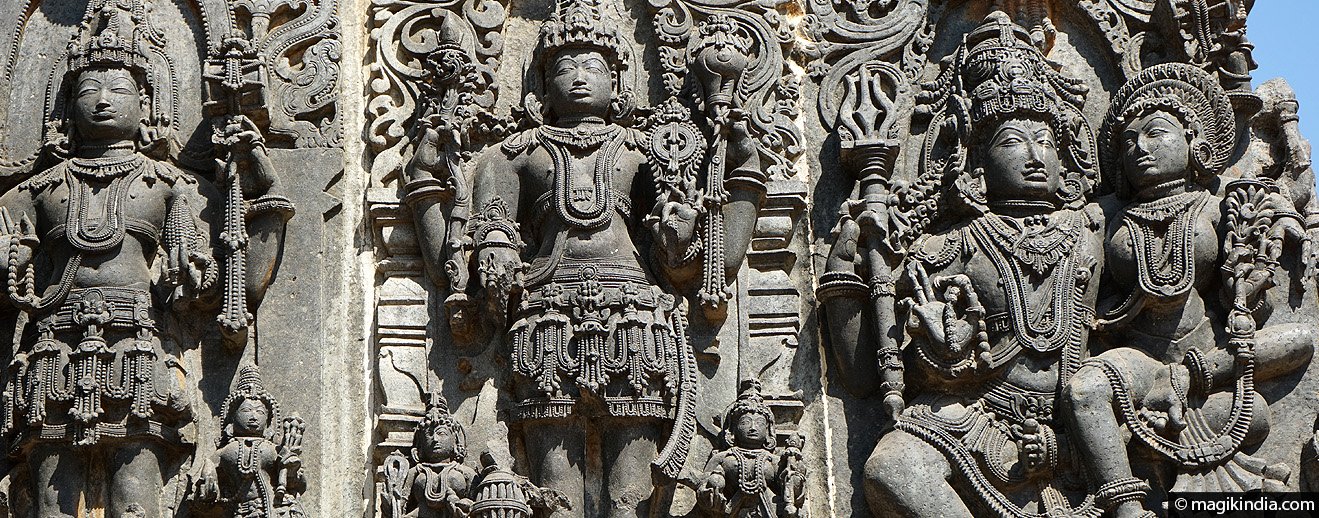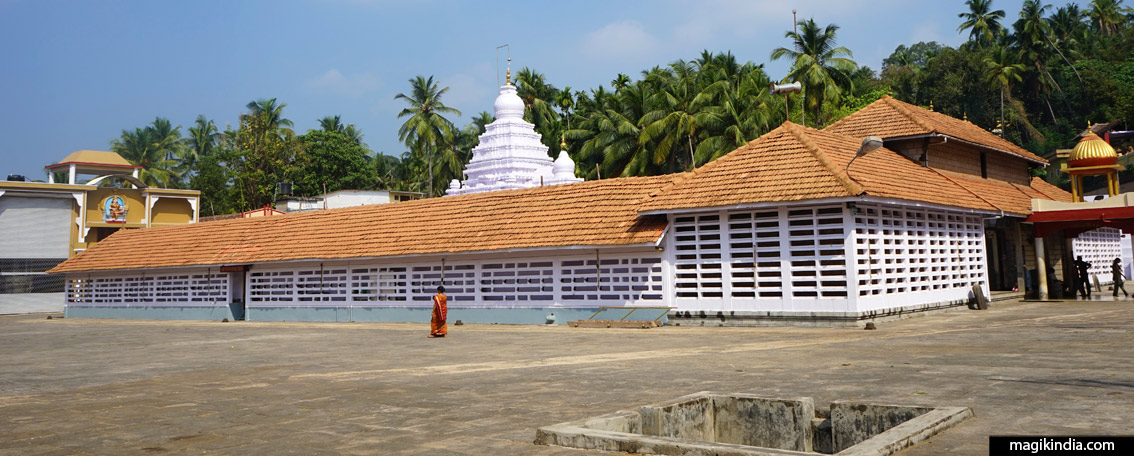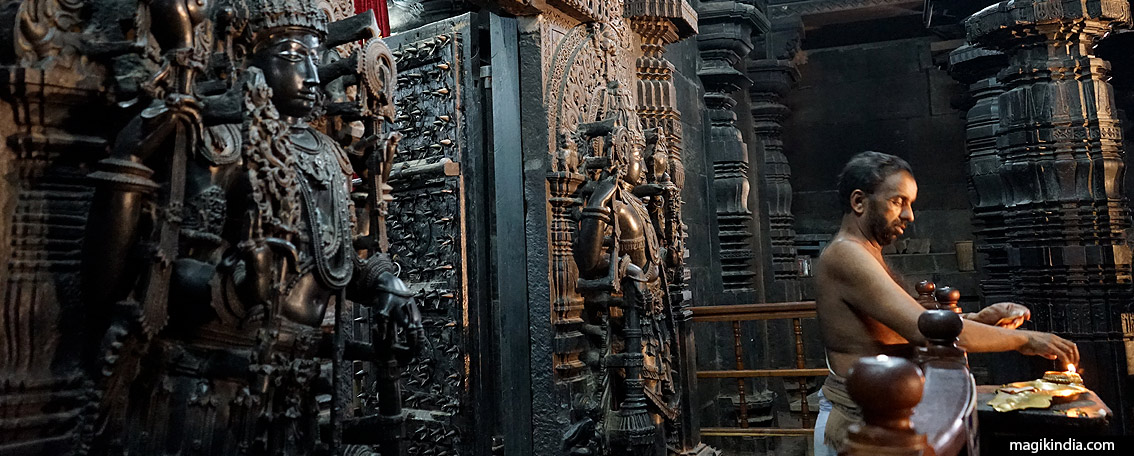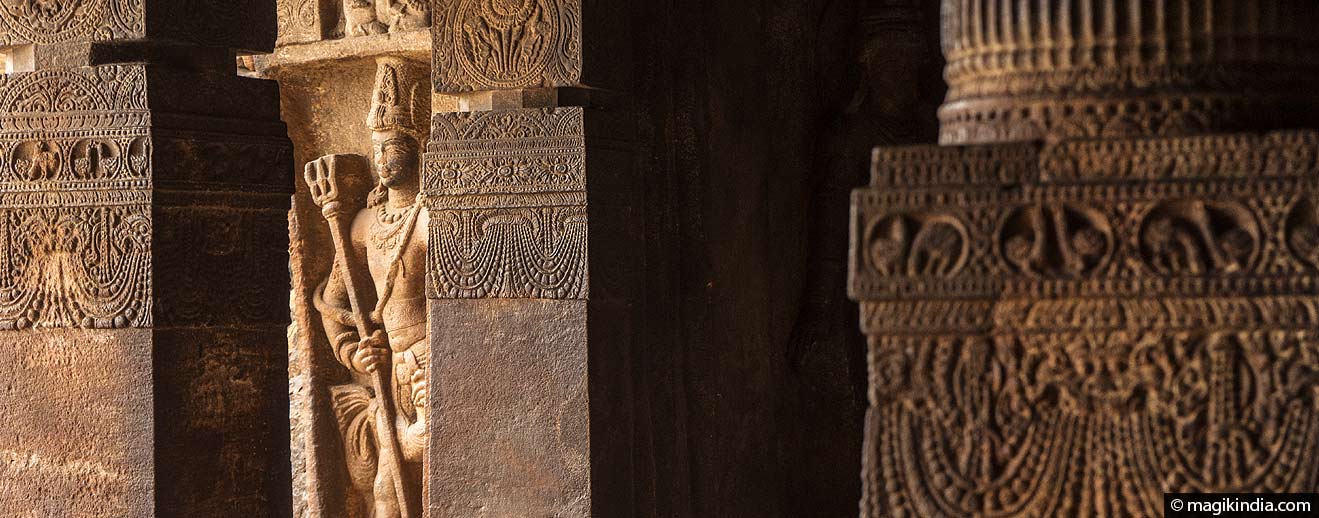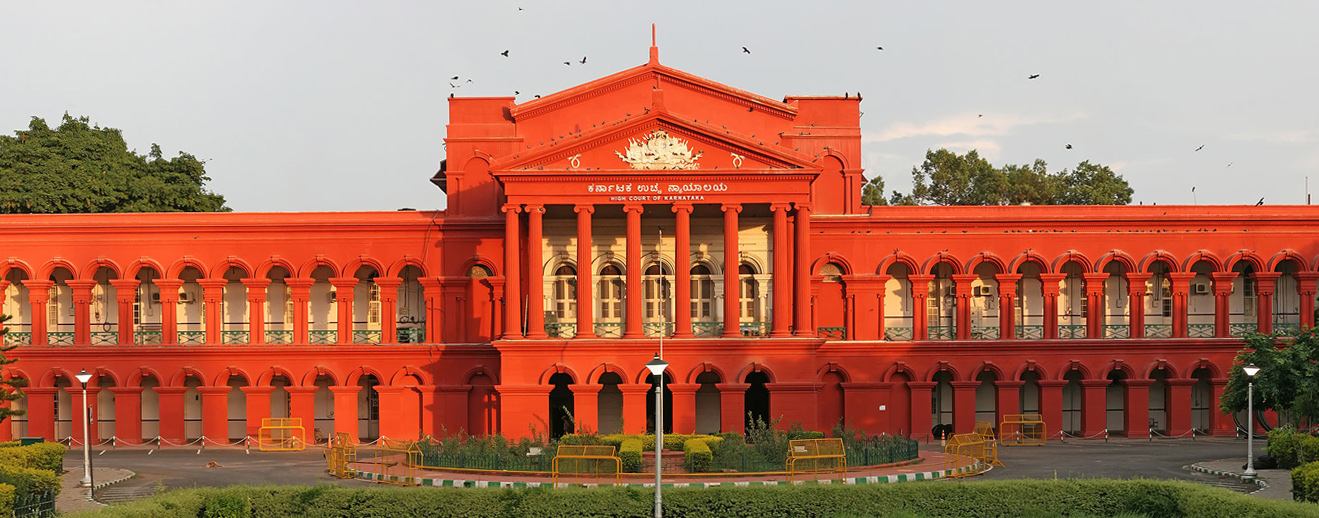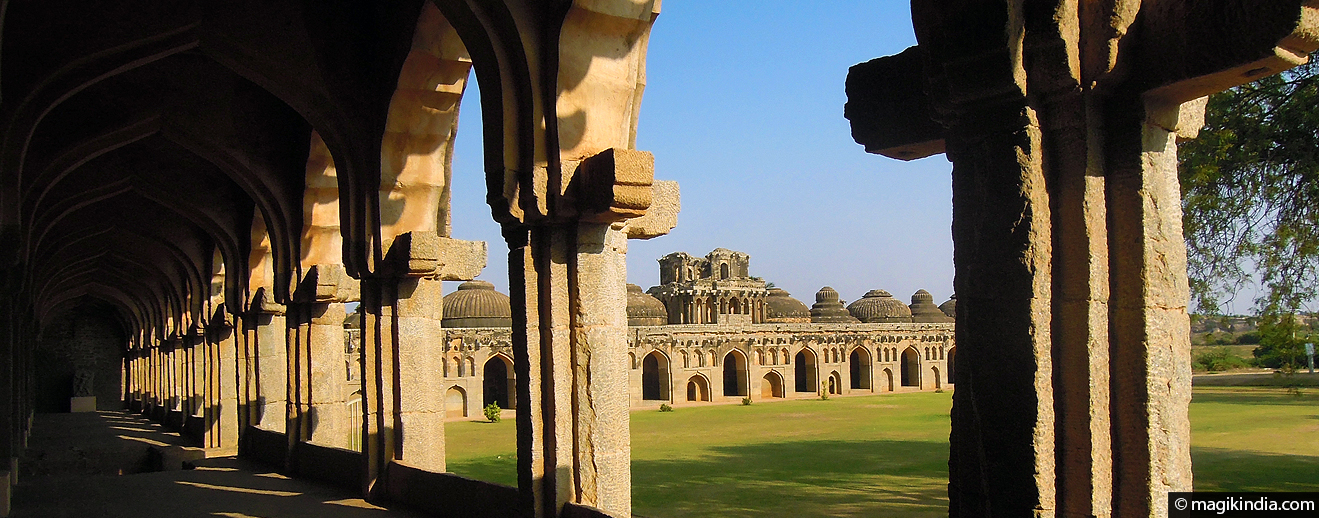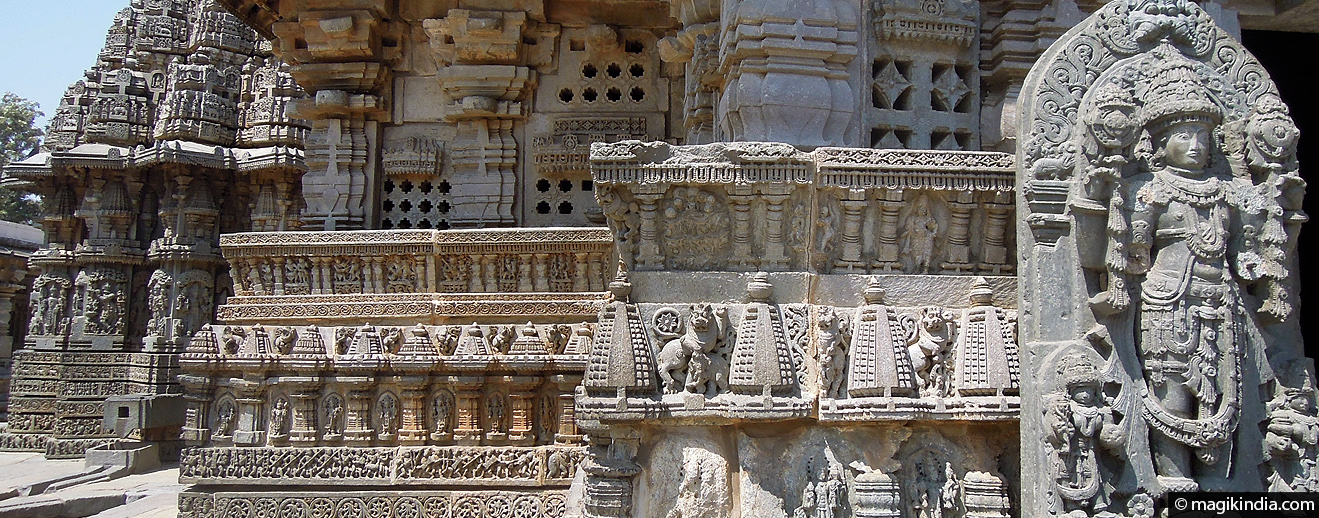
Somnathpur, masterpiece of Hoysala art
The Somnathpur temple located on the left bank of the Cauvery river is a place not to be missed on the road to Mysore. This gray stone sanctuary, built on a surprising star-shaped platform, is certainly the best ambassador of Hoysala architecture with Beluru and Halebidu.
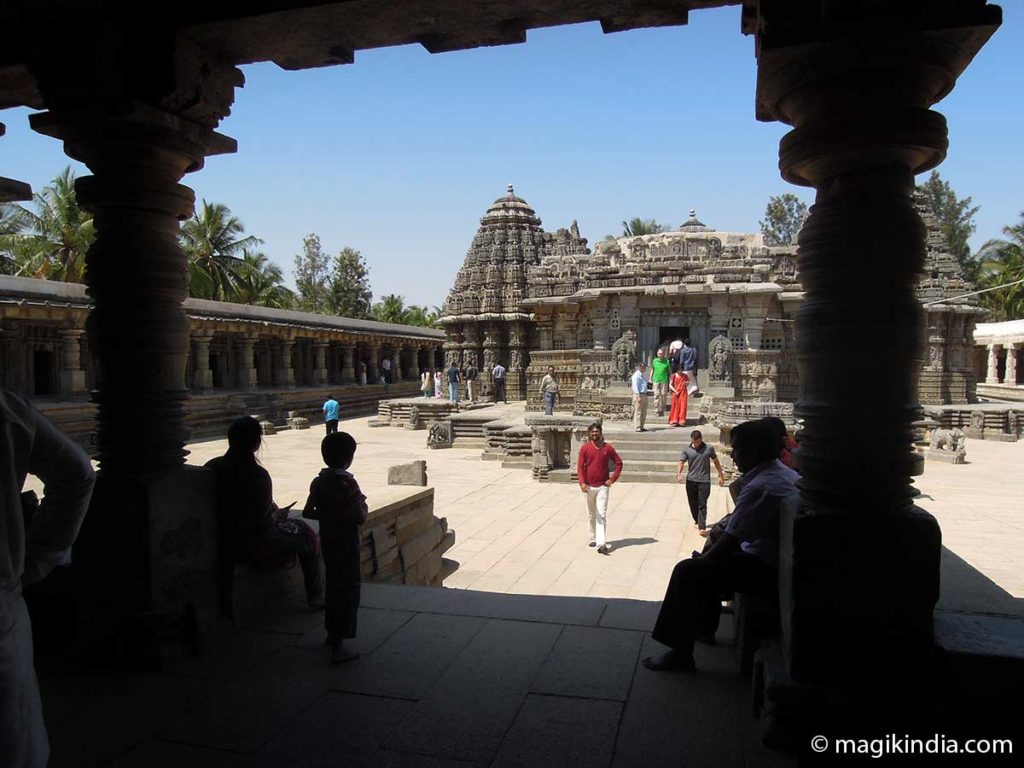
Located 35 km from Mysore, Somnathpur Temple, also called Prasanna Chennakeshava, is another of the breathtaking shrines erected by Hoysala rulers. It was built in 1268 CE, by Somanatha, the illustrious general of King Hoysala Narasimha III. The temple was created not only to honor Lors Vishnu, the main deity, but also to showcase the refinement of Hoysala architecture.
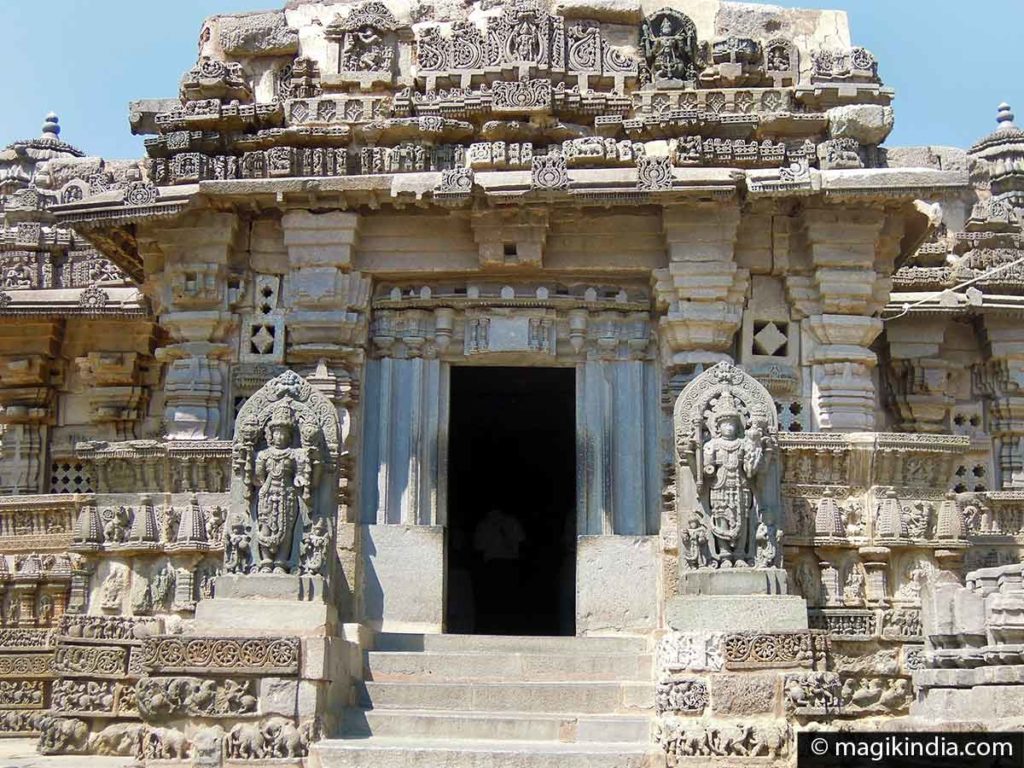
Somnathpur temple architecture
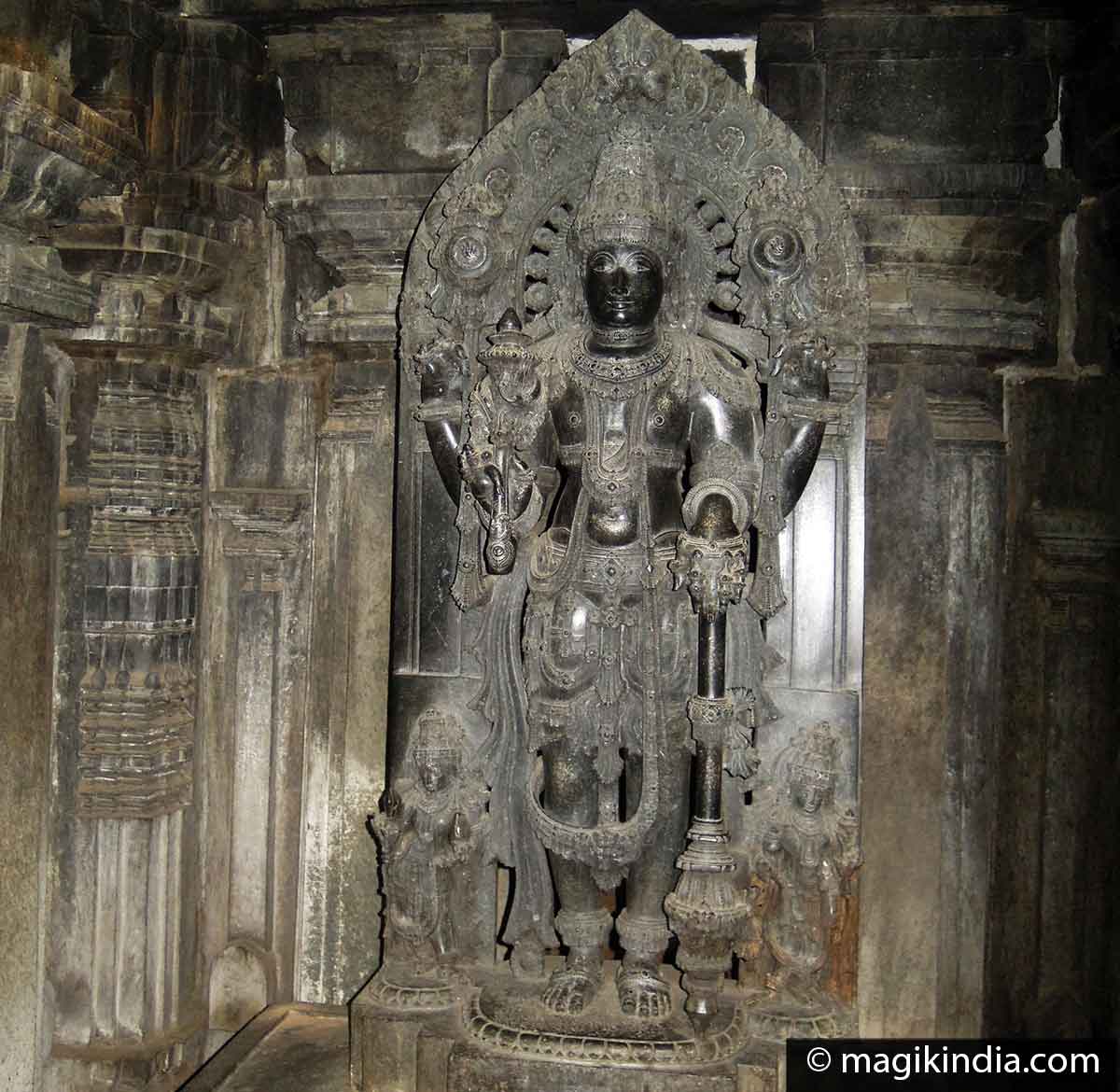
Like all Hoysalas temples, this one is also built on an elevated star-shaped platform (jagati), which serves as space for circumambulation. This soap-stone temple is richly carved, among others, with friezes from the Indian epics of the Ramayana and the Mahabharata and the childhood of Lord Krishna.
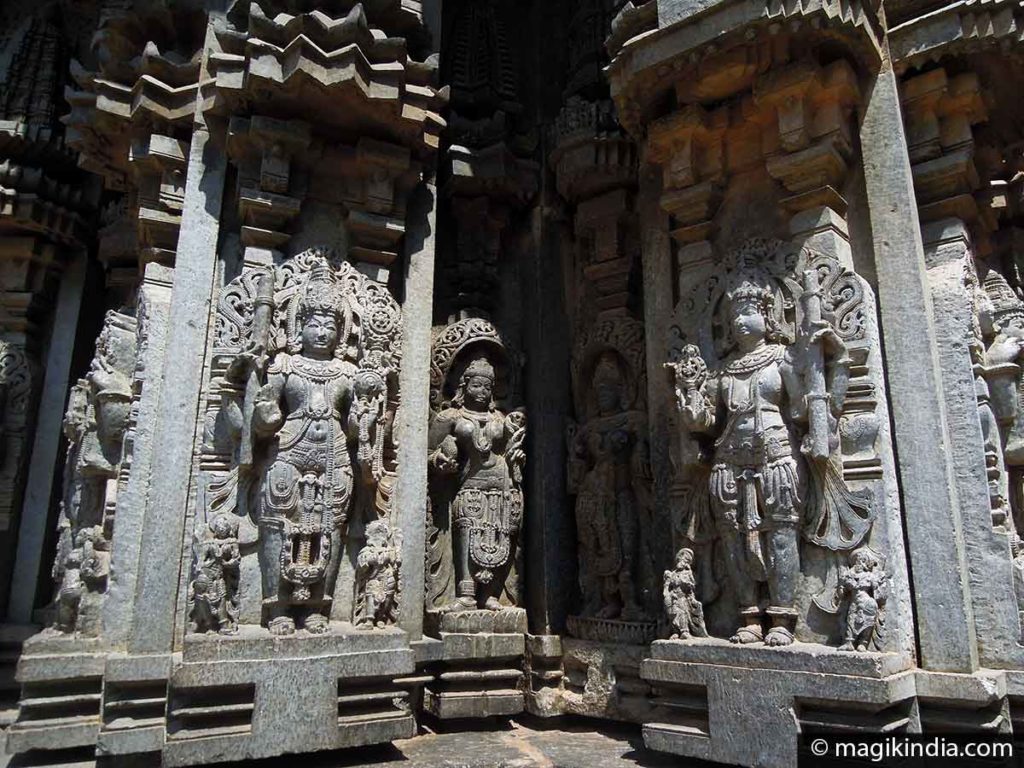
The pillars of the mandala inside the temple are lathe-turned, a characteristic feature of the Hoysala style (see below). It boasts three interconnected inner sanctums on the west, south and north sides, dedicated respectively to Keshava (the beautiful Krishna), Venugopala (Krishna as a flute player) and Janardhana (the protector), three different aspects of the Lord Vishnu. The statues are no longer revered because they were damaged during the Indo-Muslim wars.
Another feature of the Chennakesava temple is its ceiling divided into 16 finely carved symmetrical squares, some of which represent the lotus flower at different stages of blooming.
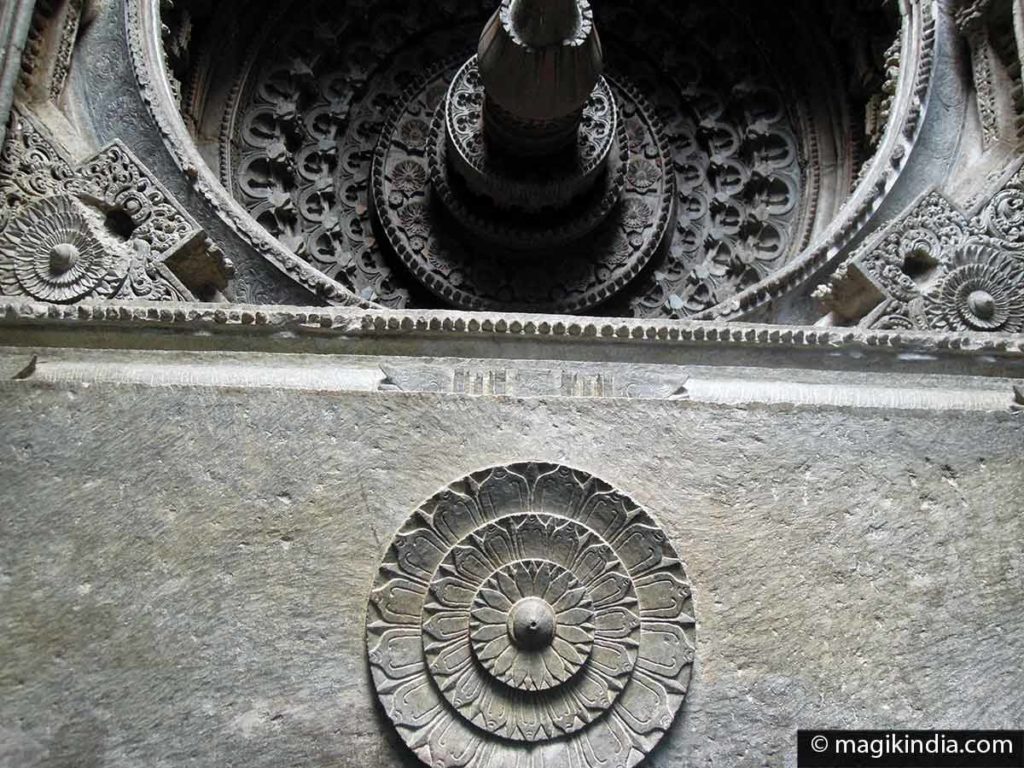
The lathe-turned pillars of Hoysala Architecture
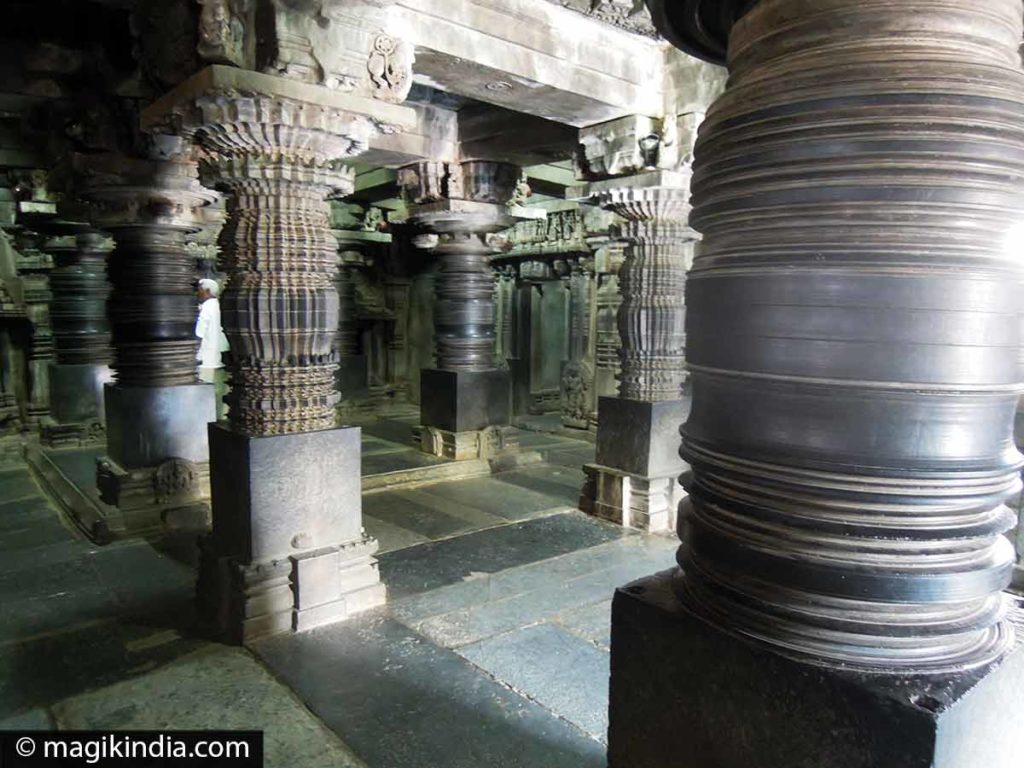
Just like we lathe-turn wood, the pillars of Hoysala temples have circular groove, which prove that they have been turned. If archaeologists agree that these pillars were mechanically lathe-turned, they don’t give a convincing explanation of how these huge pillars of almost four meters were lathe-turned. It is still a mystery.

